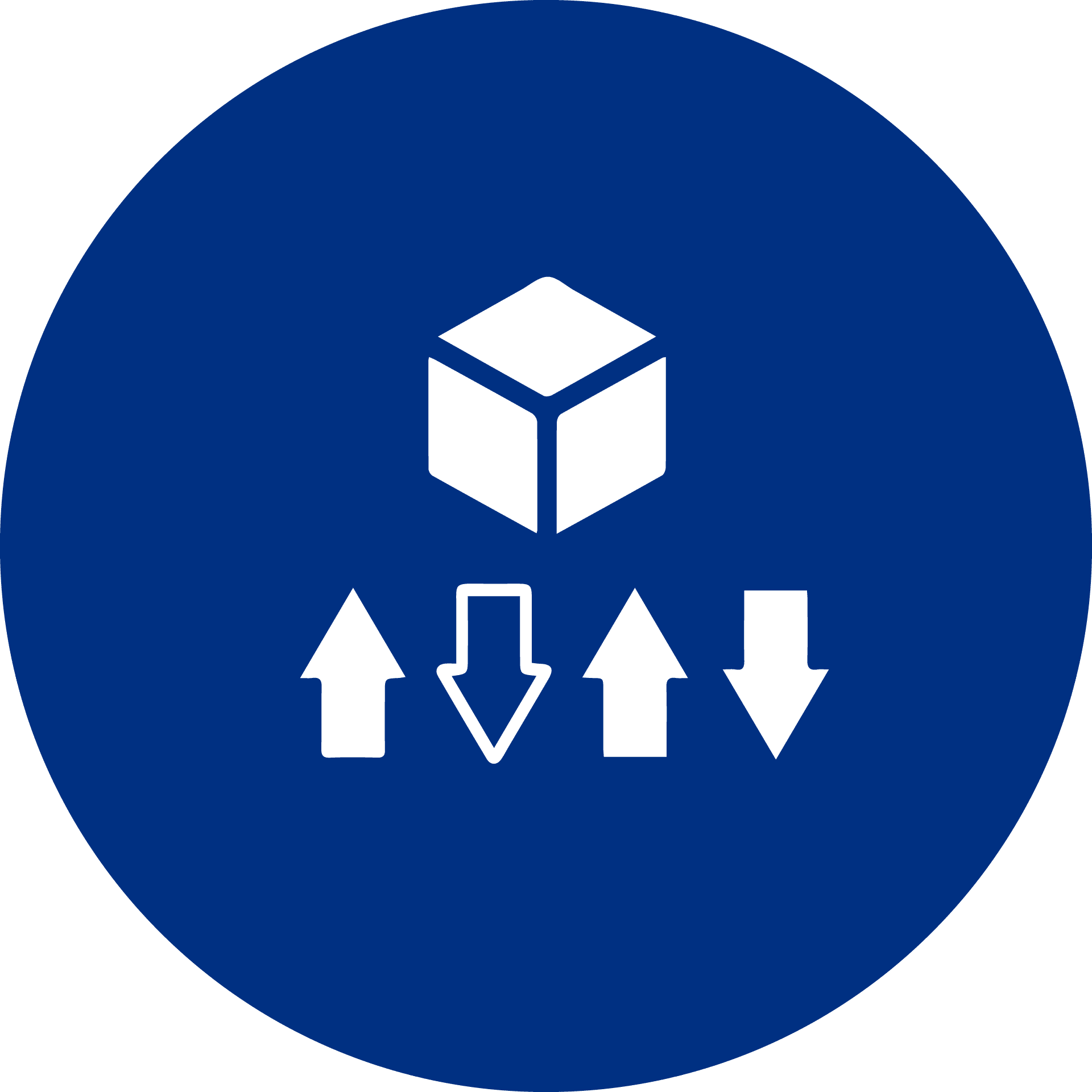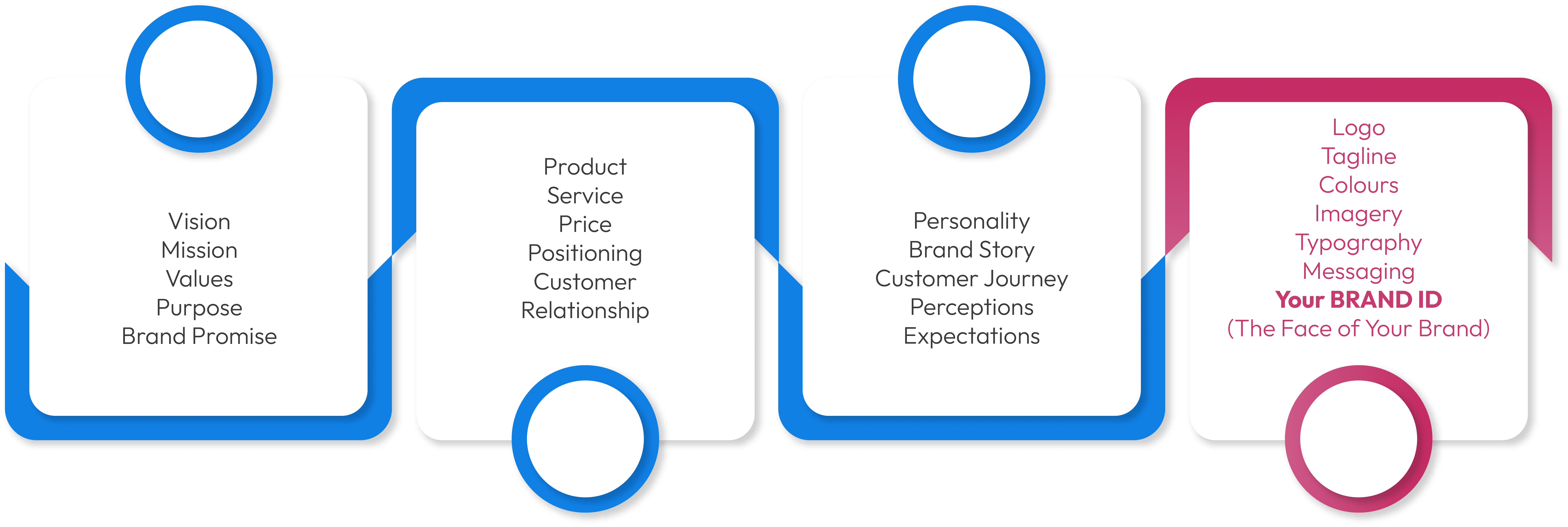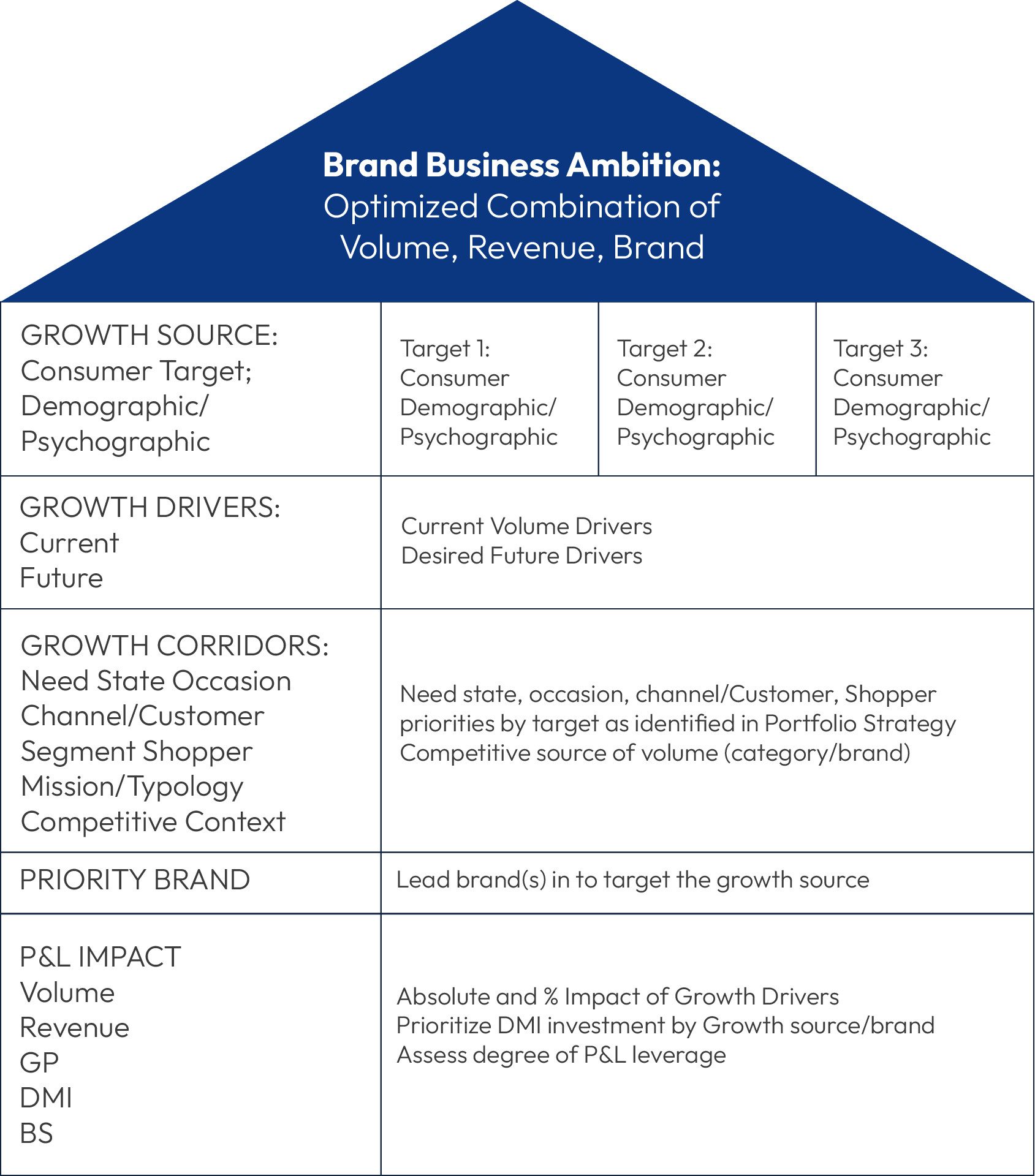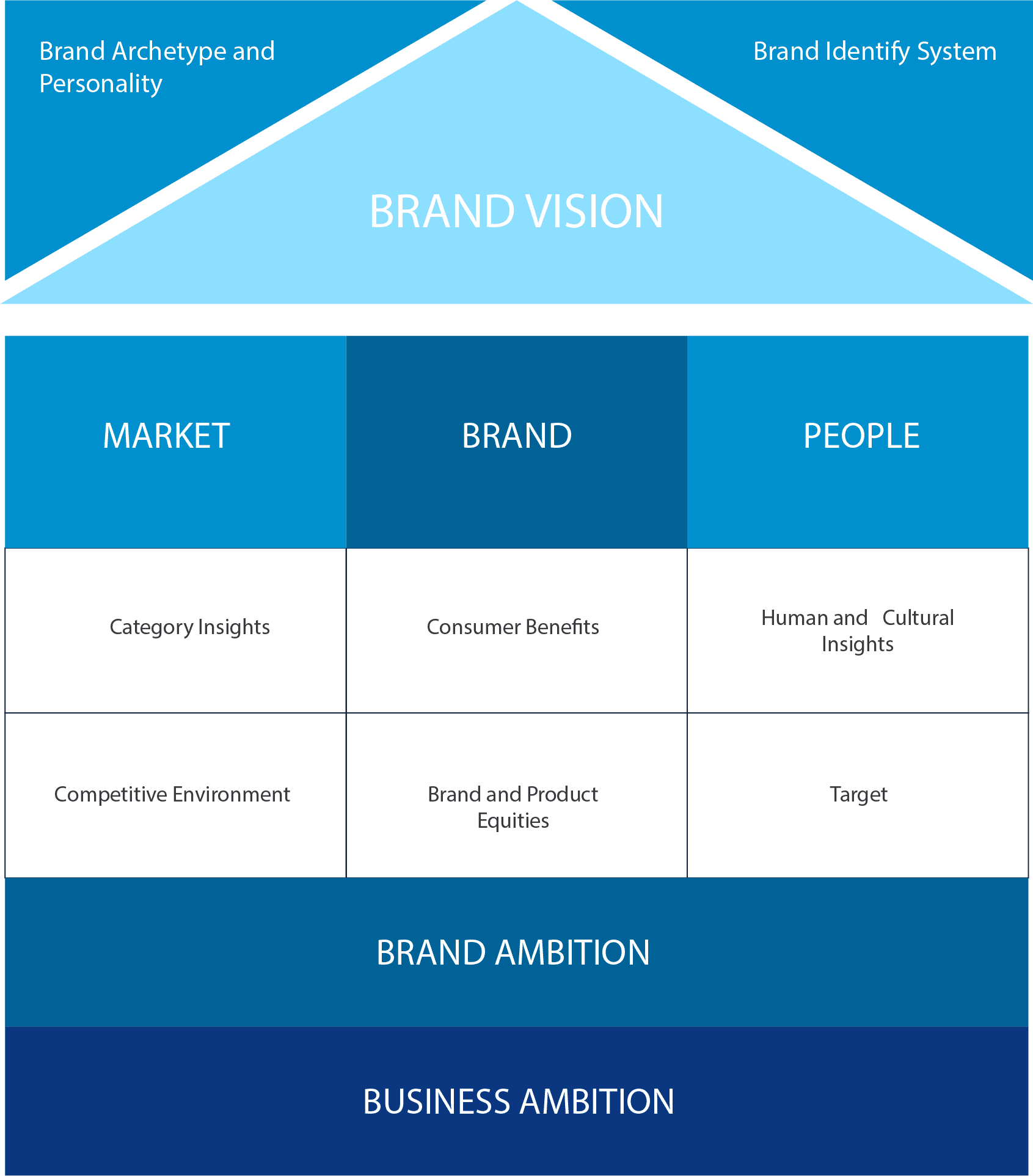Unleashing the Power
of Your Brand
In today’s competitive business landscape, a strong and distinctive brand is the key to capturing the attention of your target audience, gaining a competitive edge and becoming one of the most important assets of a strong business. At GKOF, we specialize in comprehensive brand development services that will elevate your business to new heights

Brand Naming
WHAT IS A STRONG BRAND NAME AND WHY IT'S IMPORTANT?
Brand name is the first element to identify a brand with others, a strong brand name should:

1. Readable:
A brand name that at least all your target audiences/consumers/customers can read easily to talk about it

2. Memorable:
This is important to stay in customers/ consumers/shoppers/buyers to make trial and repeat buying

3. Distinctive:
A good brand name should be thoroughly unique and distinct within the competitive landscape in which it will live

4. Brevity:
A best brand name should be short. The shorter the name is easier to spell, say, and remember. It suits for URL and email length

5. Depth:
A good brand name operates on multiple levels. It has a certain profound meaning that is related to the brand’s story and/or positioning

6. Energy:
Effective brand names jump off the page. They work their way into your head and bounce around with a kinetic energy that other names lack

7. Sound:
Good names have a certain ring to them. They are crisp and bright, rolling off the tongue without much difficulty & falling on the ear with a pleasing resonance

8. Legally Available (trademark & URL) :
A trademark check makes sure your brand is unique & can be registered as well as a domain check. All helps to build brand association & brand trust

9. Aligned with brand positioning

10. Embodies brand personality
LET'S GKOF HELP TO FIND GOOD NAME FOR YOU
The one that capture both the brand promise and the hearts and minds of the target customer
Process

1. Naming brief

2. Research on current available ones within industry and around

3. Internal brainstorming by naming consultants for options

4. Check trademark registration status , domain name availability

5. Propose shorted list

6. Do consumer/shopper researches (if required ) to select best one
Deliverables
Brand name options
Story behind each name
Consumer/shopper research results
Final brand name proposal
TIPS FOR BRAND NAME FINDING
- Use word association: Brainstorm with a group of partners, colleagues, friends or do research with customer/consumers/shoppers via simple word association games. Better to have some hints or filter choices based on industry, business vision, ambition, and brand positioning
- Think outside your native language: use foreign languages, especially if they relate to your target audience’s culture
- Use a metaphor: Metaphors can explain your brands messaging in a creative way.
- Creativity over specificity: Don’t be afraid your customers “won’t get it.” Sure, it’s easy to use product descriptors or geographic indicators in your brand But, it doesn’t leave a lot of room for vision or for growth. Go for more timeless attributes of your company so you have a better chance of creating a meaningful, valuable, and long-lasting brand name.
- Check the availability: Once you have shortlisted names , check to see if they aren’t already being registered or occupied both trademark & URL , domain name search availability and select the ones that best match your business strategy : service local or global businesses, want to have creative new extension, nowadays companies occupy the domain with extension differ from normal .com , .”geography” … but .”industry” , .”segment”
Brand Identity

What is Brand Identity?
A company’s brand identity is the combination of visuals and voice , tone that represent your company’s personality. It’s the face of your brand. If created successfully, your brand identity will represent and allude to your brand values and mission.
What are Brand Identity elements?
- Brand visuals: like colors, logo, fonts, layouts, graphic styles , wordmark and its variations
- Brand voice and tone: including a brand name, slogan or tagline
What are Brand Identity items normally used?
- Mandatory: Brand name, Logo, Message
- Stationaries: Name cards, Employee tag, Envelope, Company folder, Notebook/pen/bag…..
- Marketing materials: sales kits, brochure, leaflets, credentials / company profile
- Digital items: Presentations, E-signature, Website , Mobile
WHY IS BRAND IDENTITY IMPORTANT & WHAT MAKE UP A STRONG BRAND?
Brand identity plays a significant role in differentiating your business from the rest of the competition in the market. Developing a cohesive and professional brand identity is an important part of any effective branding strategy.
A strong brand identity should deliver:

Personality
Your brand identity should be designed to communicate your company’s overall message and promote your business goals.A brand identity is the visual representation of the values and “personality” of your brand.

Consistency
Developing a brand identity allows you to create a consistent message across all marketing materials on variety communication channels and platforms that keep audience and viewers recognize you clearly from others.

Differentiation
It helps you to differentiate your business from the competition and appropriately position your brand. Developing a professional, creative identity design can help you to stand out to potential customers in your market.

Awareness
With differentiated designs and consistently communicated on all marketing materials and channels helps to increase brand awareness. The more places your brand is featured, the more contact it will make with consumers, and the more memorable it will be.

Loyalty
An effective brand identity can help to build customer loyalty and trust in a brand, since it allows customers to make a connection between a product/service/solution and the company.
Your BRAND is made up by:

GKOF BRAND IDENTITY DESIGN PACKAGES
| DESCRIPTION | LITE | STANDARD | PRO | ADDS-ON | |
|---|---|---|---|---|---|
| Idea creation | Leadership interview | NA | MKT Head | Department Heads & Up | |
| Brainstorming + survey | Internal brainstorming | Brainstorming with customer (MKT team) | Market survey + Brainstorming | ||
| Current Brand identity | ✔ | ||||
| Deliverables Fundamental | Logo (icon, name, tagline) | 3 design concepts + mockups -> finetune on 01 selected concept | 5 design concepts + mockups -> finetune on 01 selected concept | 5 design concepts + mockups -> finetune on 01 selected concept | |
| Name card | 2 designs -> finetune on 01 selected design | 2 designs -> finetune on 01 selected design | 2 designs -> finetune on 01 selected design | ||
| Marketng materials | Company profile / Credentials | ✔ | ✔ | ✔ | |
| Brochure, Leaflets | ✔ | ||||
| Presentation template | ✔ | ||||
| Stationnary | Letter head | ✔ | ✔ | ||
| Company folder | ✔ | ✔ | |||
| Employee card | ✔ | ||||
| Envelope (large + small) | ✔ | ✔ | |||
| Notebook / bag | ✔ | ||||
| Uniform / hat/ cup | ✔ | ||||
| Digital items | Web banner | ✔ | |||
| Cover fanpage (Facebook, Linkedin, Youtube...) | ✔ | ||||
| Post fanpage | ✔ | ||||
| Mobile apps | ✔ | ||||
| Guidelines | Standard brand guidelines | Standard brand guidelines | Standard brand guidelines | Standard + online brand guidelines | |
| Original design file | ✔ | ✔ | ✔ | ||
| First draft design present (after receiving brief) | 5 | 7 | 10 | ||
| Working mode | Online presentation | Online presentation | Online/Offline |
Brand Positioning

What is Brand Positioning?
Brand positioning has been defined by Kotler as “the act of designing the company’s offering and image to occupy a distinctive place in the mind of the target market”.
A brand positioning strategy, therefore, involves creating brand associations in customers’ minds to make them perceive the brand in a specific way and different imageries vs competitors.
So a successful brand and business must:
– Be relevant to customer
– Be unique vs competitors
– Be credible & attainable
Why is this important to business success?
By shaping consumer preferences, brand positioning strategies are directly linked to consumer loyalty, consumer-based brand equity, and the willingness to purchase the brand. Effective brand positioning can be referred as the extent to which a brand is perceived as favorable, different and credible in consumers’ minds.


Types of Brand Positioning statement:
- Customer service
- Positioning convenience
- Based positioning price
- Based positioning quality
- Differentiation positioning
- Social media positioning
HOW GKOF CAN HELP YOU DEVELOP YOUR STRONG BRAND POSITIONING?
With GKOF companion, your marketing and leadership team will go through these steps:
1. Identify customer needs and business capabilities
Understand what your consumers want
Understand what your company’s and brand capabilities are
Understand how each competitor is positioning their brand
2. Creating brand positioning statement, which:
- Resonates with your consumers (via communication)
- Is different from your competitors (expressed by brand promise and proven by customer experiment)
- Can be delivered by your company (capabilities)
A brand positioning statement should have:
- Target customers: who will the product/service/solution serve?
- Benefits delivery: what benefits product/service/solution brings to customers?
- Uniqueness: what is differentiated points vs competitive offers
- Proof points: what are the reasons to believe?
3. Visualize the defined positioning statement
in works such as : brand identity design , web design
4. Support you to communicate
With external stakeholders such as consumers, customers, shoppers, distributors… via digital communication services
5. Measure results and recommend improvements
By using market & brand researches (qualitative and quantitative) to perceptually mapping your brand position amongst competitors within industry/segment

BRAND RE-POSITIONING
For the established brand, the business owners and marketing leaders may want to re-positioning by some reasons, then we may need to do a full Brand assessment; further market and brand researches and discuss to get answers for following questions before going through similar process Brand positioning.
- How familiar are consumers with your brand?
- Are consumers able to recognize your brand easily?
- Do consumers associate your brand with specific products, services, or values?
- How well-known is your brand compared to competitors in the market?
- How aware are customers of your brand compared to your competitors?
- Are customers more familiar with your brand or your competitors’ brands?
- Do customers recognize your brand easily when compared to your competitors?
- How do customers differentiate your brand from your competitors?
- What are the unique features or attributes that set your brand apart from competitors?
- What strengths does your brand have in terms of product quality, innovation, or value proposition?
- Are there any patents, proprietary technologies, or exclusive partnerships that provide an advantage over competitors?
- How effectively does your brand engage and connect with customers across various touch points?
- What are the primary factors that prompt customers to take action or make a purchase decision?
- Is it price, product quality, brand reputation, customer reviews, recommendations, or other factors that heavily influence their choices?
- Are there specific pain points or challenges that your brand addresses, leading customers to choose you over competitors?
Brand Extension

What is Brand Extension?
Brand extension is a marketing strategy that uses an already established brand name to introduce a new product or new category to its target customer base.
By using the existing brand name and introducing new products or services that are close to but outside of the typical reach of the branding identity, companies are able to showcase new ideas without having to start brand building from the ground up. This way helps a brand to stretch out in new directions, but carries over the brand’s existing brand equity to instill customer trust and continue building on current brand loyalty.
BENEFITS OF A SUCCESSFUL BRAND EXTENSION:
If the strategy is done right, it can be a great way to reach new audiences, find new customers, and increase sales. Besides, can help:

Lower investment regarding brand equity building (leveraging existing brand identity, brand awareness , easier to get trials ...)

Receive higher chance of success than new launches

Increase wallet share as customers are willing to pay more for trusted brand products

Brands more competitive
However, there can also be significant risks, resulting in a diluted or severely damaged brand image if done wrong:

In spite of the positive impact of brand extension, negative associations and wrong communication strategies do harm to the parent brand even the brand family.

Poor choices for brand extension may dilute and deteriorate the core brand and damage the brand equity.
WHEN BUSINESSES DO BRAND EXTENSION?
- Want to capture new customer segments, and new markets, satisfy the unmet needs
- Want to expand the ecosystem (leverage master brand to create sub-brands)
- Want to develop a new trend (i.e new way of doing exercise, new consuming style, new living style, new way of managing business by using digital solutions…)
TYPES OF BRAND EXTENSION?
1. Line extensions: A line extension is a term used to describe brand extensions where a brand launches a new product line in a category that the brand is already associated with.
Example: Coke -> Coke light, Coke zero
2. Complementary or companion extensions: are extensions where a brand introduces a product line that, while new, is still similar to the original line or is complementary to it in some way. A companion product can help to recapture audiences already interested in the core brand and also tempt new demographics to buy in.
Example: Adidas from a sports shoes company to sports apparel brand
3. Company Authority or Expertise Extension: Businesses that have become an authority in their sector can launch new products or services in an area in which they don’t currently operate and transfer that reputation to their new product category.
Example: Apple from selling PC to wearable products with strong and trusted technology advancements
4. Customer base extensions: a brand extends its reach by creating new product categories for its already-specified demographic. They’re not complementary products, but they will be of interest to the same audience as the existing offering.
Example: Highland coffee store chains offering cakes aside drinks to greater customer segments (i.e: adults -> kids) on a similar occasion
HOW GKOF HELPS TO DEVELOP YOUR BRAND EXTENSION
These are steps we will consider to go through, can be vary upon business status and availability of business insights

Brand Strategy
WHAT IS BRAND STRATEGY?
Brand Strategy is The Fusion of:
BRAND GROWTH STRATEGY
Brand Growth Strategy is focused on the science within Brand Strategy. The purpose of Brand Growth Strategy is to define, quantify and prioritize growth opportunities for a brand in order to deliver financial objectives for sustainable growth

BRAND VISION AND ARCHITECHTURE
Brand Vision & Architecture is focused on the art within Brand Strategy. The purpose of Brand Vision & Architecture is to articulate what the brand aspires to stand for in the hearts & minds of Consumers / Customers and define the enduring foundation that delivers on what aspiration, informing how the brand is brought to life over time

SOME NOTES
Brand strategy is all about choices, it prioritizes the multiple opportunities identified for the brand in the Business Growth & Portfolio strategies
The Brand Strategy framework helps us develop strategies for a brand’s current needs and long-term objectives.
When developing Brand Strategy for both new and existing brand, there are certain things to consider as you progress toward creating a Brand & Portfolio plan.
BRAND STRATEGIES ARE LIKE OUR GPS

They should help position us on our map toward final destination

They should provide clear & specific guidance

They should help move us forward

If we know where we are going, it would provide continuity and confidence

And if we are a little lots, they should help to clarify the decisions we have to make
With existing brands, there will be a history to our Brand Strategies, which should inform choices. Where strategy are working, we shouldn’t change them unless the Growth opportunities call for us to make new choices. Our ultimate goal with great brand strategies for existing brands is not only that they help deliver business results , but that they help build a better brand legacythat we can hang on to the next generation
Looking for a global experience Brand Strategy Consultant, connect GKOF !
x
x

